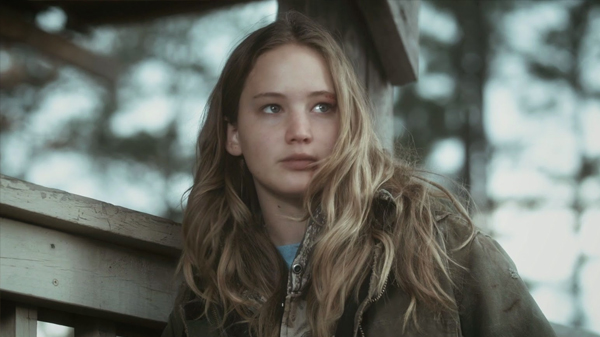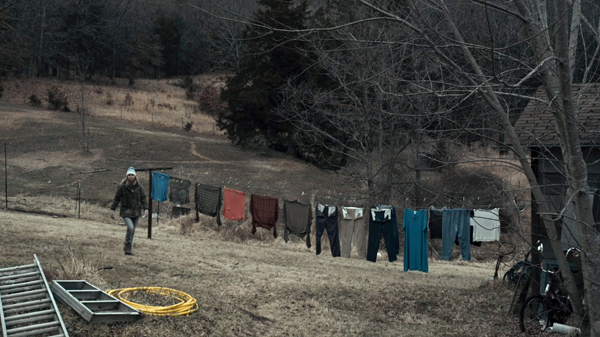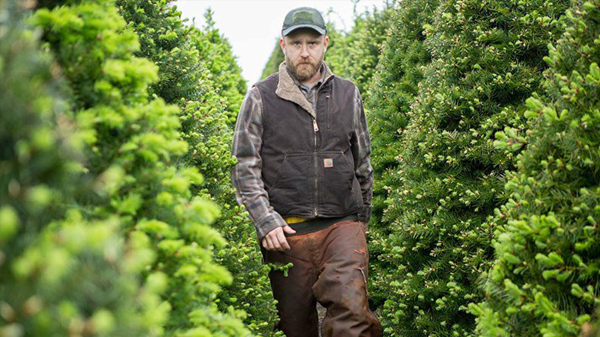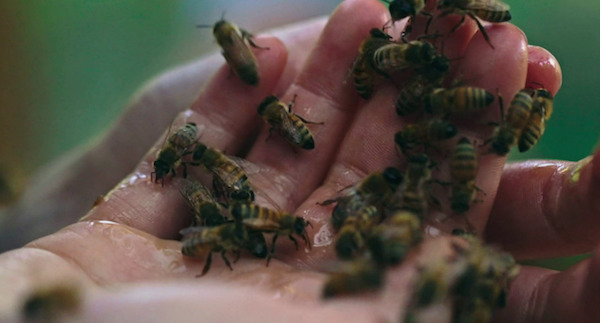In her two key titles, Winter’s Bone and Leave No Trace, director Debra Granik connects with the natural world to enhance the stories she brings to life. Julia Teti explores how place informs people across mood and setting.
The chilled, dry Ozarks are painted with hues of grey. There is barely any snow, yet ice covers the brittle land laden with dead leaves. The air prickles the skin and chills the exteriors of those who live in squalor, their homes like scattered, dilapidated twigs across the plain. In the National Parks of Oregon, lush, rain-speckled green fronds and branches provide the shelter for those who wish to blend with the land and remain unseen.
Debra Granik's environments carry the purest elements of the natural world. In the filmmaker's two key titles, Winter's Bone and Leave No Trace, organic settings are used to heighten mood and character dynamics. Each narrative explores corners of forgotten America, like stones finally unturned. Beneath this earth lie stories of neglected people, who are influenced and encompassed by the landscape they traverse and manoeuvre. Instead of manipulating the natural world, Granik utilises these elements to serve as illustrative settings and emotional extensions of characters and their circumstances.
In Winter’s Bone, the frosted air of the Ozarks creates a distinctly melancholic milieu. Ree Dolly, played by Jennifer Lawrence in her first Oscar-nominated role, is left abandoned by her father to care for her ailing mother and two young siblings. Uncertain of his whereabouts, Ree’s journey to find her father becomes one of isolation, as the community she resides in turns against her. Neighbours and relatives grow concerned that she may learn the dark truth behind his disappearance. The same sentiment of loneliness is extended by way of the encroaching cold and darkening aura of the world.
As Ree gets closer to the truth, she wanders from one home to the next. The muted greys appear like a constant fog she must trudge through, a personification of the mystery of her father’s disappearance. There are dense lies, weighed down by characters who never offer Ree any help in her search. By the time Ree discovers pivotal information, ready to confront the leader of her community about her father’s disappearance, all natural light and warmth disappears from her purview completely.
When Ree is left isolated in search of Thump Milton, the patriarch of the Dolly family and the residing community, Granik uses the cold to further validate how sequestered Ree has become. She breathes clouds of frosted air as she yells, calling on Milton to pay attention and answer her questions. He turns his back, without so much as acknowledging her existence. The colour scheme at the cattle auction, where the one-sided confrontation takes place, becomes muted, like an ice shell over the camera lens. With the screen’s frostiness evoking Ree’s loneliness, the next scene sees her beaten and tormented.
Following the violence at hands of Merab, Milton’s wife, and her sisters, Ree is taken back home by Teardrop, her distant uncle. On the drive, Teardrop reveals the secrecy surrounding Ree’s father. Granik uses artificial white light against the natural black darkness to signify a change; a disturbance to the natural order. Darkness submerges Teardrop’s face with only unnatural light giving any shape to his flesh.
With Leave No Trace, Granik leaves the cold, shrill plains of the Ozarks for Oregon and Washington greenery. In the forest of a public park, Tom and her father Will live in tune with and as part of the natural world. They use its resources thoughtfully and are kind to the earth – it is their haven. The purpose of the woods also extends beyond shelter for Tom and Will, as trees offer a hiding place from the manufactured, disturbed world of civilization.
The quiet of the woods informs Will’s mentality. In the forest, away from human commotion, Will, an Iraq War veteran struggling with PTSD, is able to live peacefully. When Will and Tom are discovered by law enforcement and plucked from their refuge, both characters are forced into a fragile state. They are suddenly confined by walls and separated by doors. Will is made to take a test to assess his mental state, the wallpaper behind him shows woods and the glass windows look out on splotches of green – but this is no sanctuary for him. Granik uses the park Tom and Will were living in as an oasis, their safety net. Taken away from their home, Will becomes disturbed and fragile and Tom scared and uncertain. Outside their home in the manmade world, their roots become weak and they both begin to buckle.
When Will meets the agents of the facility, a poster showing greenery and woods has the word, “Integrity” written in large, golden letters beneath the picture. Once Will and Tom are reunited and prepare to relocate to a community and house, a similarly styled poster shows a picture of a path leading to a house with a word in all capital letters spelling “Challenge.” Granik’s attention to such details illustrates the larger picture she is drawing. Will and Tom communicated truthfully and behaved in an unaffected manner in the park, where they trusted one another. In a manmade house, there are physical and mental walls up between Will and Tom. It is a battle he cannot overcome.
While Will works on a Christmas tree farm, Granik shows the trees being cut down, wrapped for shipping, and wholly disturbed from their natural state, as to mimic Will’s own state of mind. In a moment of weakness, he breaks down, overwhelmed by the world around him. Tranquil in the forest, Will thrived among the trees left to live without being touched by humans. But among other people, forced to adhere to rules and regulations, he is confined and folds in on himself, wrapped up by the pressures and sounds of machines.
Prior to leaving their home, Granik captures an image of moving clouds migrating to Tom and Will’s next destination. In the next scene, Will wakes Tom – they have to move again. After an accident that renders Will unable to walk, the pair settle into a small community and Tom begins to find attachment to people personified through her interaction with a bee hive. When she first handles the bees, the beekeeper tells Tom, “You can feel the warmth of the hive.” Granik’s illustration of community and connection through a natural element provides the deepest reading of Tom’s character. She thrives in settings barely touched by humans, where the world as it should be is still intact. But unlike her father, Tom needs human connection to survive.
A detail-oriented filmmaker, Debra Granik does not simply use these settings as specific pockets of America that are called upon to be explored. The landscapes she captures and the trees, woods, and plants of the forest, even the weather, all speak to her characters’ journeys. Granik chills her audience to the core with the story and atmosphere of Winter’s Bone as Ree Dolly is engulfed by the cold of isolation. Will’s struggle is only heightened by the fluctuating weather and the treatment of the natural world in Leave No Trace, while Tom finds her own place, balancing the people and the trees. Granik finds life in nature, and breathes it into her stories.
Julia Teti (@jltet14) is a freelance Film and TV writer. She has contributed work to Film School Rejects, Polygon, The Playlist, Vague Visages and more.
READ ME is a platform for female-led writing on film commissioned by Girls on Tops. Louisa Maycock (@louisamaycock) is Commissioning Editor and Ella Kemp (@efekemp) is Contributing Editor.






